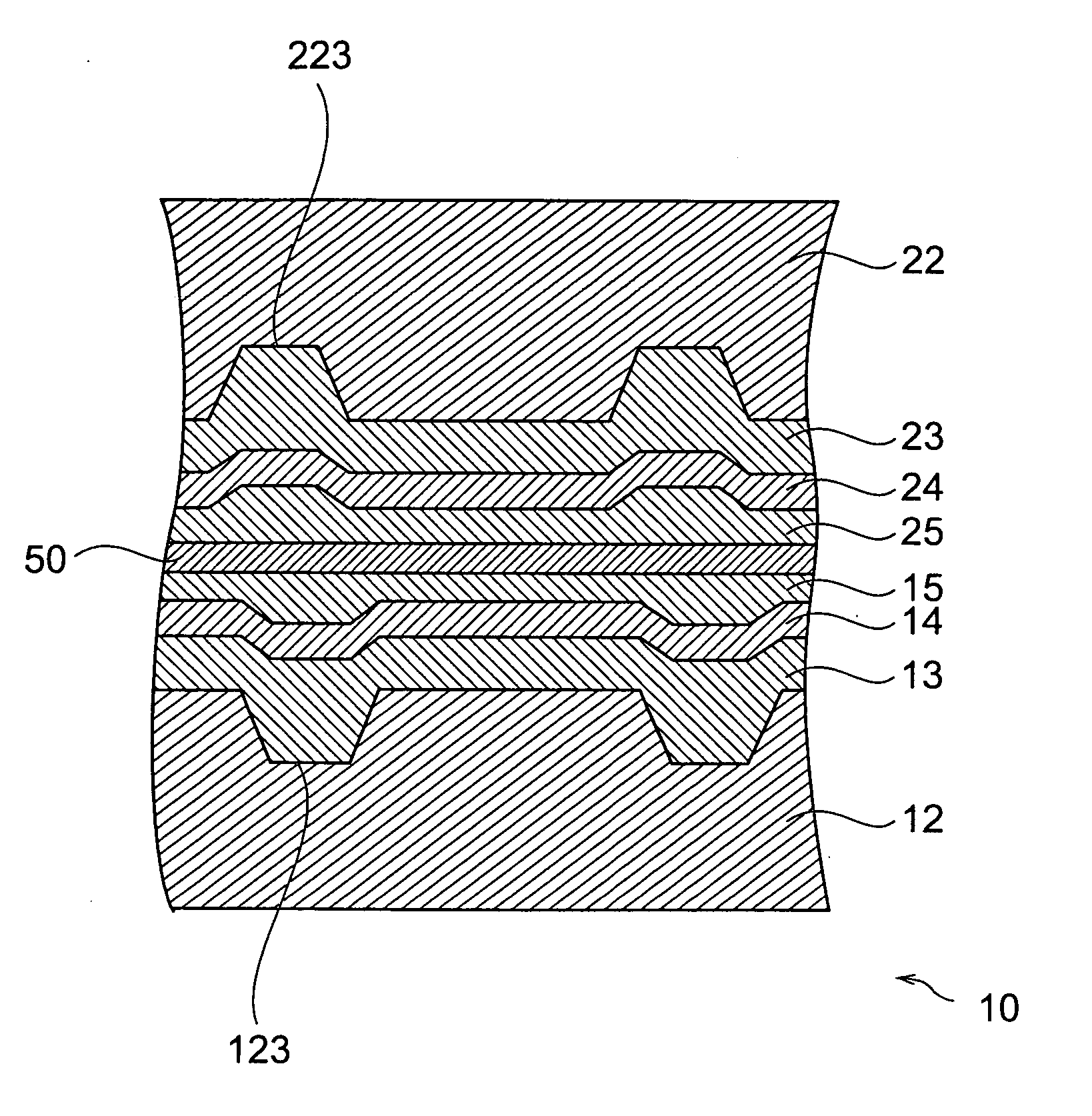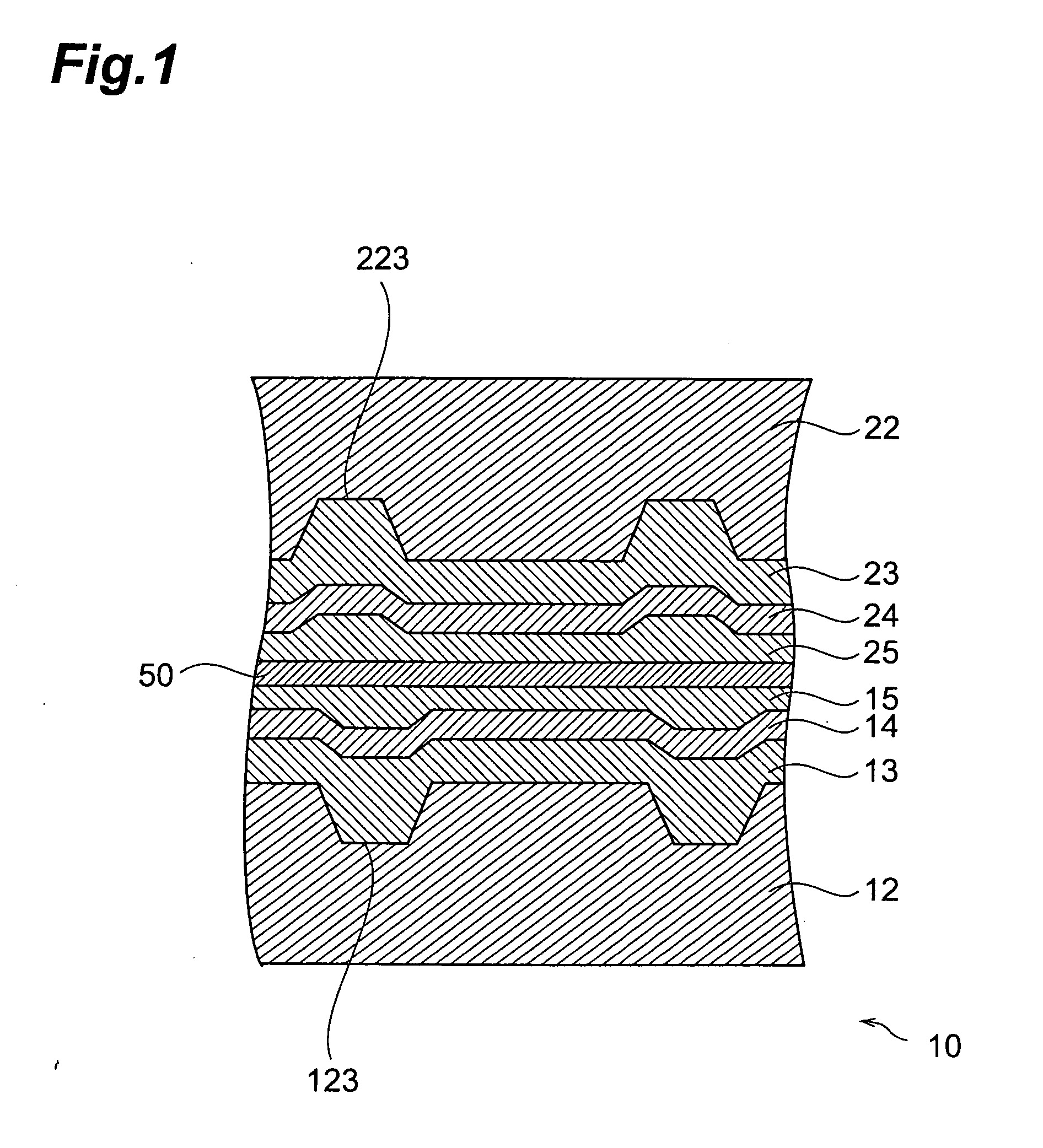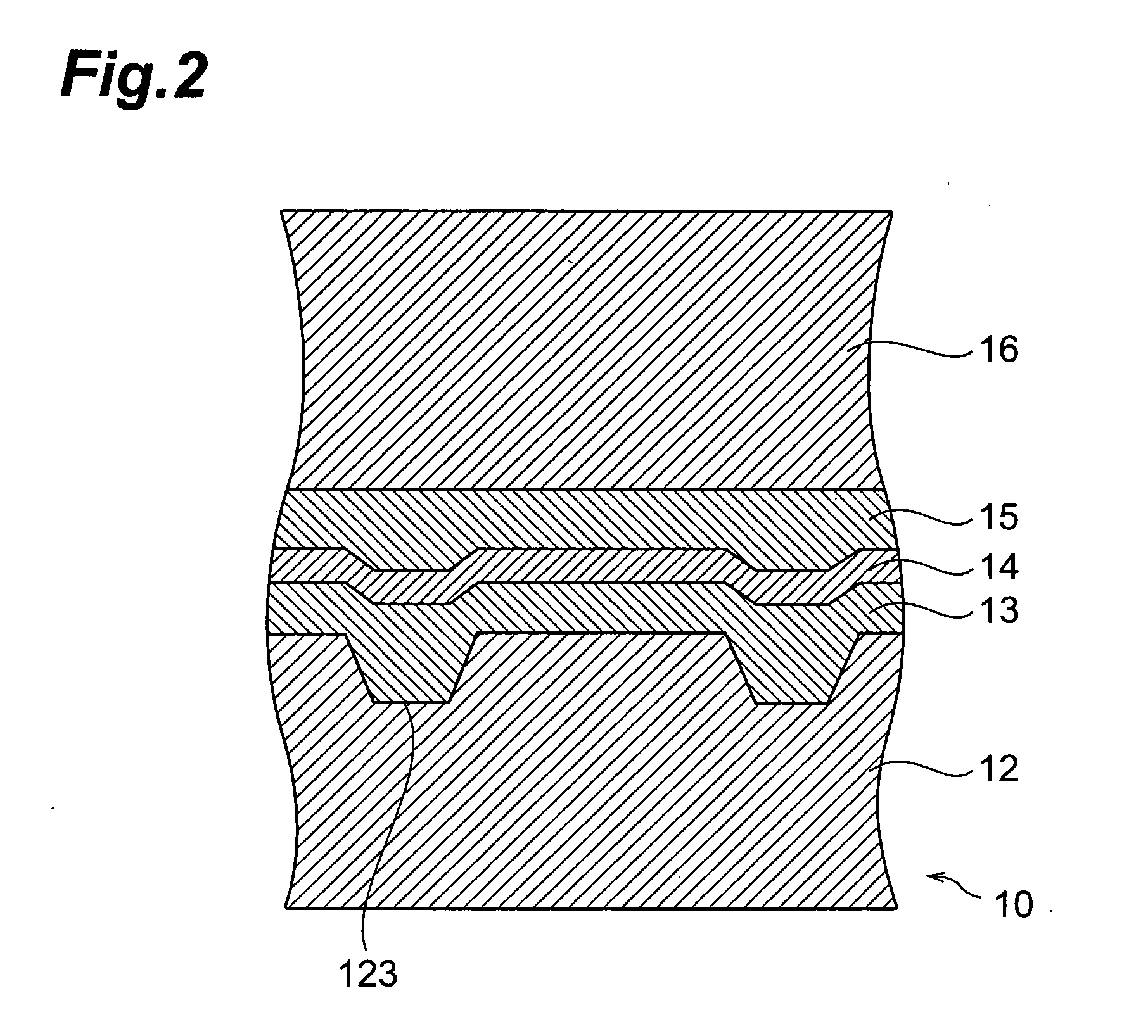Optical recording material and optical recording medium
- Summary
- Abstract
- Description
- Claims
- Application Information
AI Technical Summary
Benefits of technology
Problems solved by technology
Method used
Image
Examples
example 1
[0107] A polycarbonate resin substrate was prepared of diameter 120 mm and thickness 0.6 mm having a pre-groove (depth 180 nm, width 0.30 μm, groove pitch 0.74 μm) on one side. A recording layer coating solution was also prepared by adding a salt-forming dye 1 represented by the following formula (73) to 2,2,3,3-tetrafluoropropanol so that its content was 1.0 mass %.
[0108] The obtained coating solution was coated on the surface of the aforesaid polycarbonate resin substrate having the pre-groove formed thereupon, and dried to form a recording layer (thickness 100 nm). Next, an Ag reflecting layer (thickness 85 nm) was formed by sputtering on this recording layer, and a transparent protective layer (thickness 5 μm) comprising an ultraviolet curing acrylic resin was formed on the Ag reflecting layer so as to obtain a laminated structure. Two of these laminated structures were manufactured, and stuck together with their protective layers facing each other using adhesive so as to obta...
example 2
[0109] An optical recording disk was manufactured in an identical manner to that of Example 1, except that the salt-forming dye 2 represented by the following formula (74) was used instead of the salt-forming dye 1 of Example 1.
examples 3-13
, Comparative Example 1-3
[0110] In Examples 3-13 and Comparative Example 1-3, an optical disc was manufactured in an identical manner to that of Example 1, except that the dye compositions 3-13 represented shown in Table 1 were respectively used instead of the salt-forming dye 1. In Table 1, the figures in brackets refer to symbols for chemical structural formulae given hereabove and hereafter.
TABLE 1SaltCyanineChemicalCompositionChemicalCompositionformula No.(mass %)formula No.(mass %)Example 373406160Example 473506150Example 574406560Example 674406660Example 774406760Example 874406860Example 973306170Example 1073606140Example 1173706130Example 1273407760Example 1373407860Comp. Ex. 175707630Comp. Ex. 275100 ——Comp. Ex. 375407660
[0111]
[0112] [Evaluation of Recording / Reproduction Properties]
[0113] Next, a signal was recorded on the optical recording discs of Example 1-13 and Comparative Example 1-3 at a linear speed of 3.5 m / sec or 28.0 m / sec using a laser light of wavelength 655 n...
PUM
 Login to View More
Login to View More Abstract
Description
Claims
Application Information
 Login to View More
Login to View More - R&D
- Intellectual Property
- Life Sciences
- Materials
- Tech Scout
- Unparalleled Data Quality
- Higher Quality Content
- 60% Fewer Hallucinations
Browse by: Latest US Patents, China's latest patents, Technical Efficacy Thesaurus, Application Domain, Technology Topic, Popular Technical Reports.
© 2025 PatSnap. All rights reserved.Legal|Privacy policy|Modern Slavery Act Transparency Statement|Sitemap|About US| Contact US: help@patsnap.com



